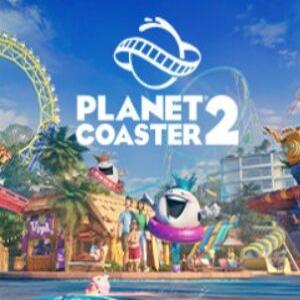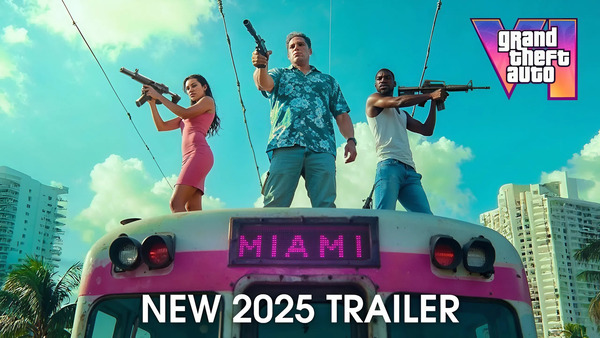Planet Coaster 2 – The Ultimate Evolution of Theme Park Simulation
Planet Coaster 2, released November 6, 2024, by Frontier Developments, takes theme‑park simulation to new heights. With full water‑park integration, improved creative tools, asynchronous coop, and deeper management systems, it builds on the beloved original while introducing fresh complexity. This article dives into its timeline, core gameplay, technical performance, community tools, multiplayer features, strengths, weaknesses, and final verdict—all from the viewpoint of a seasoned simulation expert.
1. Timeline & Game Launch of Planet Coaster 2
Planet Coaster 2 was officially revealed July 11, 2024, debuting with trailers showcasing water‑park features, coaster customization, and cooperative gameplay. The demo deep dive followed July 31, 2024, and the full game launched across PC, PS5, and Xbox Series X/S on November 6, 2024.
The sequel inherits the Cobra Engine from the original while incorporating marketplace feedback to overhaul path tools, scenery editors, utilities (power, water), and event sequencing. Frontier’s roadmap has included Update 2 in February 2025 (video billboards, synced coaster launches), signaling ongoing post‑launch support.
2. Water Parks & Attractions Expansion in Planet Coaster 2
The marquee addition is full water‑park gameplay. Pools, lazy rivers, wave pools, flumes, lifeguards, and filtration systems now feature alongside traditional rides. You can craft custom‑shape pools, drop slides, raft rides, and sculpt pool depth—lock‑in realism plus creative freedom.
However, some criticisms surfaced: flat slide bottoms and odd physics in first‑person flume view, plus required water treatment adds management complexity that some find cumbersome.
3. Creative Tools & Coaster Customization Evolution
Planet Coaster 2 introduces advanced building tools and coaster enhancements. Path building now uses draw‑based system replacing piece‑by‑piece—and supports elevation curves; though praised, it can feel unintuitive.
Decorative pieces are scalable and mirrorable; you can attach scenery directly to rides and customize coaster cars with switch tracks, drop switches, and smoother track connections. Transfer‑of‑load blur, weather effects, and first‑person plip‑cam add immersion.
4. Management Systems & Utility Simulation
Inspired by Planet Zoo, PC2 includes power, water mains, and filtration grids, firing up generators and hiring maintenance staff. These systems deepen economic simulation—players must strategize facility placement and budgets—but can add tedious micromanagement friction.
Career mode integrates electric/water constraints into challenges such as “build a functional pool without blackout” scenarios.
5. Game Modes & Cooperative Multiplayer Experience
Planet Coaster 2 retains three core modes: Career (scenario challenges), Sandbox (limitless creativity), and Franchise (asynchronous coop competitive mode).
Coop allows multiple players to work in the same park, but not simultaneously—progress is shared upon login. While not true real‑time coopération, it enables collaborative creativity across platforms.
Franchise and sandbox both include cross‑platform save sharing; visiting each other’s parks is now possible.
6. Technical & Performance Review
Graphically, PC2 delivers high‑fidelity water effects, dynamic lighting, realistic guest models, and smooth camera transitions. Ride rides are silky smooth, and first‑person mode enhances immersion.
But performance concerns persist. Reports note lag when placing scenery, choppy framerates in dense parks, occasional crashes, and optimization issues even on high‑end PCs. Consoles fare better, though UI feels designed for controller at expense of PC UX.
7. UI, User Experience & Learning Curve
Researchers often point to UI as PC2’s weakest area. The nested menus, tabs, and non‑intuitive workflows—likely built with consoles in mind—impair experienced builders who prefer precise control.
Reddit discussion highlights:
“UI is clearly built for consoles…making building workflow nearly impossible”
Many users hope for post‑launch PC UI optimization.
8. Community Engagement & Workshop Integration
PC2 supports Steam Workshop (or equivalent platform versions) from day one. Users can share parks, coasters, scenery presets, and water‑park creations.
New event sequencer tools allow animatronic shows with smoke and sound baked into park attractions. Combined with cosmetic scaling and mirroring, this fosters creativity and long-term community growth.
Why Planet Coaster 2 Matters in 2025
-
Unmatched creative freedom: Water‑park, coaster, and décor tools empower personalized park visions.
-
Next‑gen immersion: First‑person ride view, weather events, sound design, and detailed scenario design enrich engagement.
-
Community‑driven longevity: Steam Workshop and coop sharing support endless discovery and creativity.
-
Challenging simulation: The utility systems and career complexity offer depth for veterans seeking realism.
Final Verdict
Planet Coaster 2 redefines the genre through bold new features and depth. Despite UI and performance rough edges, its core—creative expression, simulation challenge, community support—is strong. With ongoing developer updates, it promises to become the definitive theme‑park sim of the next generation.
Conclusion
Planet Coaster 2 delivers a compelling blend of innovation and familiarity. Its water‑parks, advanced building tools, cooperative opportunities, and immersive systems mark it a leap forward from its 2016 predecessor. Though early technical issues and interface frustrations persist, its creative power outshines shortcomings. With an overall expert rating of 4.2/5, Planet Coaster 2 stands as a must‑have for simulation and theme‑park enthusiasts in 2025—and will only improve as it receives polish and community content.


























